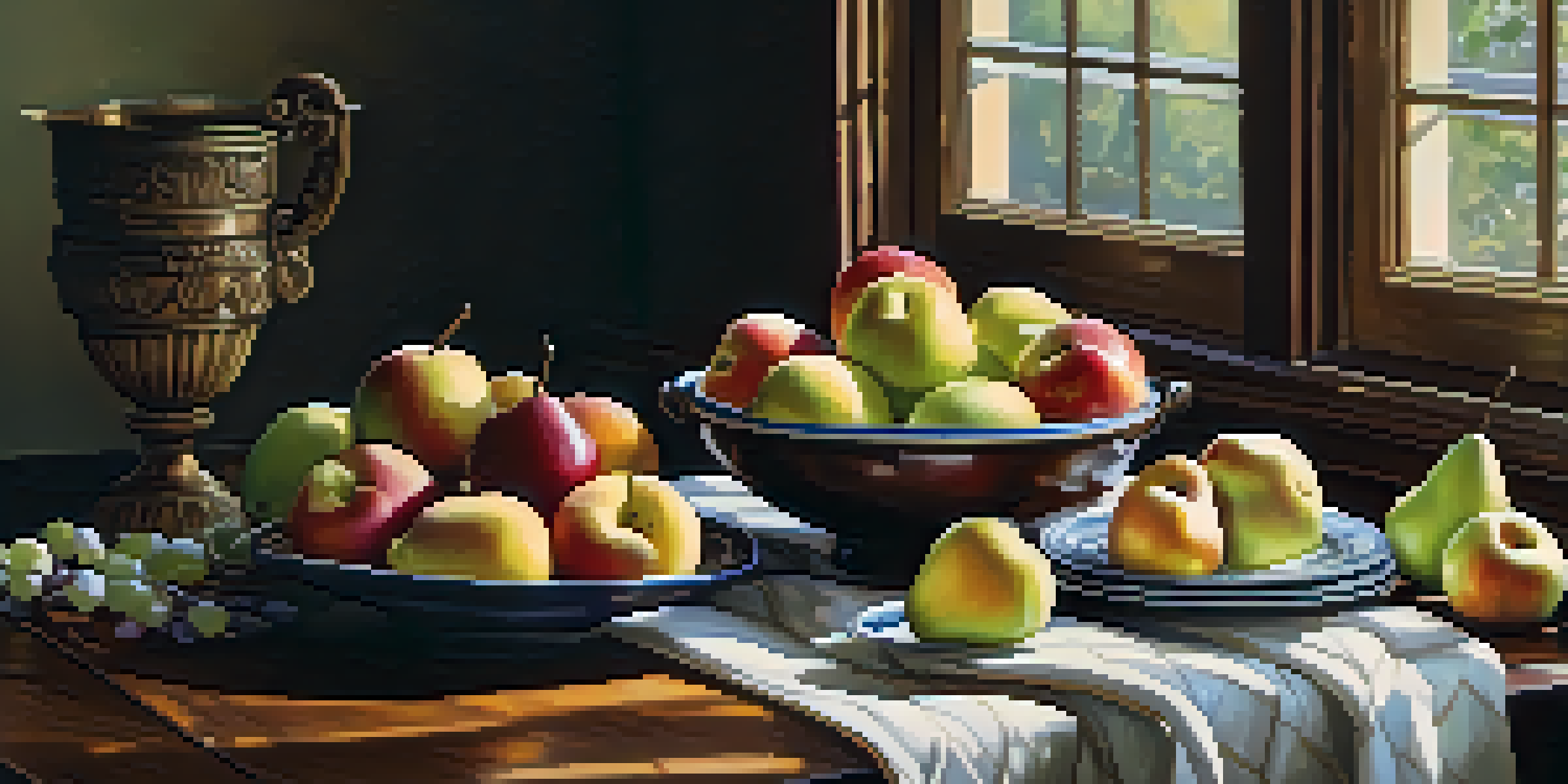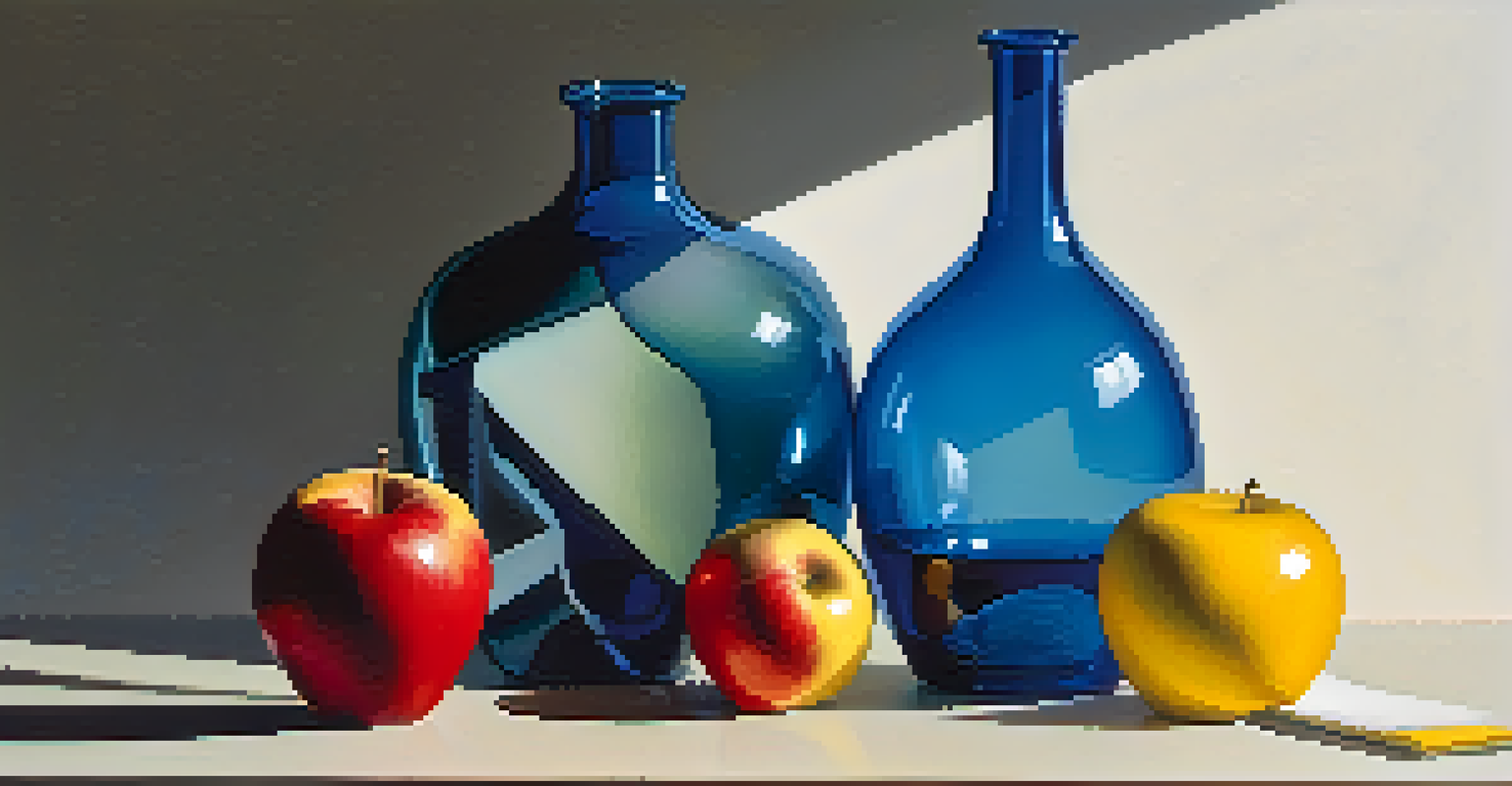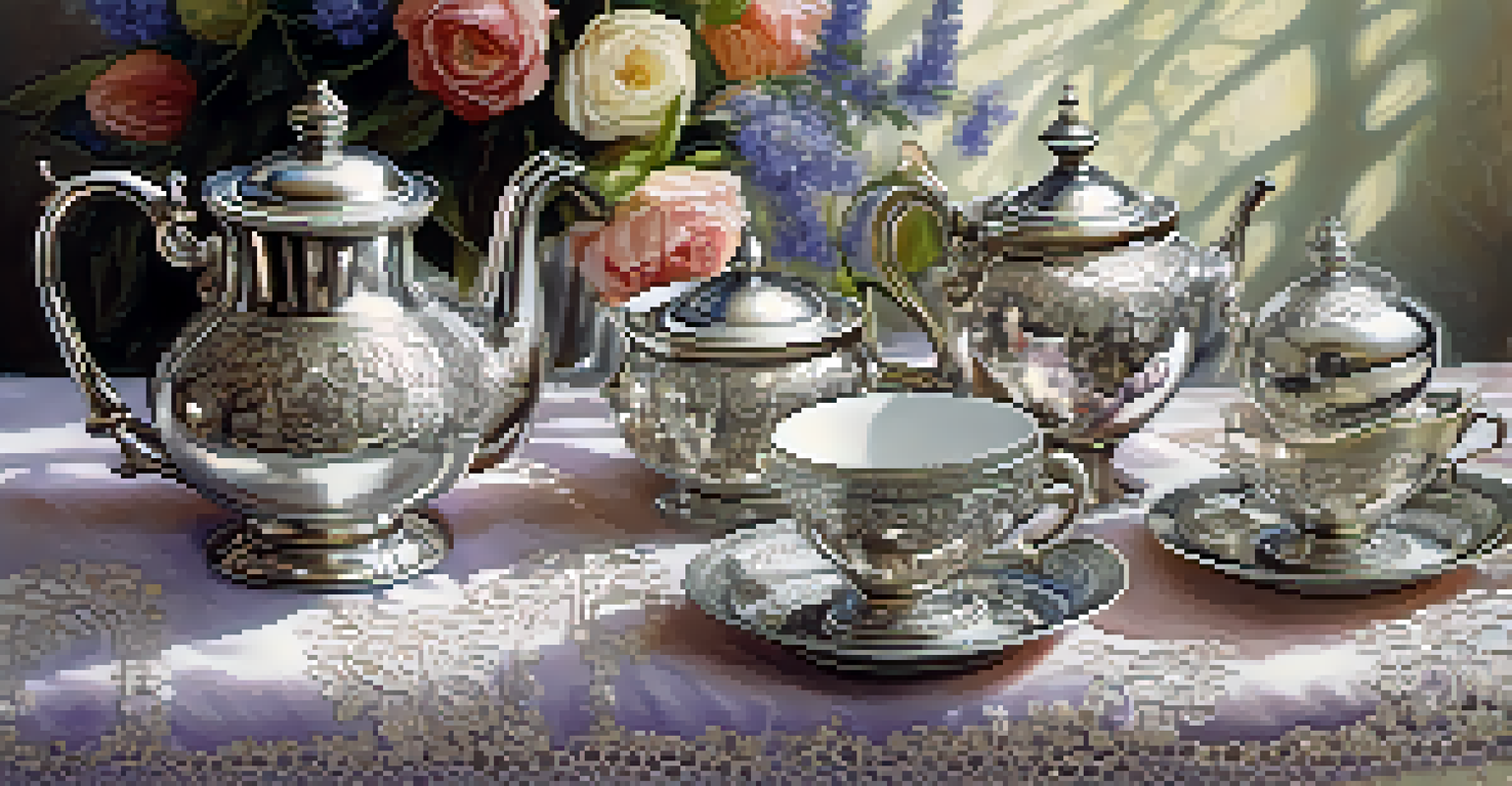Famous Still Life Artists Who Shaped the Genre

The Origins of Still Life: A Brief Overview
Still life as an art form has its roots in ancient cultures, where objects symbolized deeper meanings. In these early works, items like fruit and pottery were not just decorations; they conveyed messages about wealth, mortality, and the passage of time. This genre blossomed during the Renaissance, gaining prominence as artists began to explore light, texture, and composition more intricately.
The still life is a way of seeing the world through the eyes of the artist, revealing the beauty in the ordinary.
One of the key characteristics of still life is its ability to capture the beauty of everyday objects. Artists could experiment with arrangements, colors, and backgrounds to create compelling narratives or striking visuals. By focusing on inanimate subjects, they invited viewers to appreciate the subtleties of the world around them, often leading to moments of introspection.
As we dive into the lives of famous still life artists, we’ll see how each contributed uniquely to the evolution of this genre. From the luminescent works of the Dutch Masters to the bold colors of modern interpretations, their legacies continue to influence artists today.
Caravaggio: Revolutionizing Still Life with Dramatic Realism
Caravaggio, an Italian Baroque painter, is often credited with introducing intense realism to still life. His use of chiaroscuro, the contrast between light and darkness, added depth and drama to his compositions. This technique not only heightened the emotional impact of his works but also brought an unprecedented level of detail to everyday objects, making them appear almost three-dimensional.

In pieces like 'Basket of Fruit,' Caravaggio showcases his mastery of light and texture, capturing the natural imperfections of the fruits with stunning accuracy. His approach encouraged viewers to connect with the subject matter on a personal level, making ordinary items feel extraordinary. This shift marked a turning point in still life, setting a standard for future artists.
Still Life: A Rich Artistic Tradition
The still life genre, originating from ancient cultures, evolved through history, reflecting deeper meanings and inviting viewers to appreciate everyday beauty.
Caravaggio's influence extended beyond just still life; his dramatic style impacted various genres of painting. His ability to evoke emotion through simple objects paved the way for artists to explore the narrative potential of still life, leading to a richer and more profound appreciation of the genre.
The Dutch Masters: Elevating Still Life to New Heights
The Dutch Golden Age brought forth a remarkable wave of still life artists, including the likes of Pieter Claesz and Willem Claesz Heda. These painters took the genre to unprecedented heights, showcasing not just beauty but also symbolism within their works. Their paintings often featured sumptuous arrangements of food, flowers, and everyday objects, reflecting the affluence of the time.
Art is not what you see, but what you make others see.
One notable aspect of Dutch still life is the intricate attention to detail. Artists utilized meticulous techniques to depict textures and surfaces, from the sheen of polished silverware to the delicate petals of flowers. This precision not only captivated viewers but also encouraged them to reflect on the transient nature of life and possessions, a theme that resonates deeply through their work.
Moreover, the inclusion of vanitas symbols, like skulls or wilting flowers, served as reminders of mortality and the fleeting nature of material wealth. This blend of beauty and philosophical depth cemented the Dutch Masters' place in the still life tradition, influencing generations of artists long after their time.
Cézanne: The Bridge to Modern Still Life
Paul Cézanne, a pivotal figure in the transition from 19th-century Impressionism to modern art, transformed still life with his innovative approach. He emphasized geometric shapes and bold colors, challenging traditional perspectives and inviting viewers to see objects in a new light. His works often featured simple arrangements of apples or bottles but conveyed a sense of depth and structure that was revolutionary.
In paintings like 'Still Life with Apples,' Cézanne's brushstrokes create a sense of movement and energy, breaking away from the static nature of earlier still life. This dynamic approach encouraged artists to explore abstraction, paving the way for future movements such as Cubism. Cézanne's influence is evident in how he shifted the focus from mere representation to a more expressive interpretation of reality.
Influence of Iconic Artists
Famous artists like Caravaggio and O'Keeffe transformed still life by introducing realism and abstraction, respectively, inspiring future generations to explore new artistic expressions.
Cézanne's legacy in still life extends beyond his own works; he inspired countless artists to experiment with form and color. His ability to capture the essence of objects through abstraction opened doors for the exploration of still life in ways that continue to resonate in contemporary art.
Georgia O'Keeffe: A Modern Take on Still Life
Georgia O'Keeffe is celebrated for her transformative approach to still life, blending abstraction with natural forms. Her iconic paintings of flowers and objects are characterized by bold colors and sweeping lines, which invite viewers to experience familiar subjects in a fresh, invigorating way. O'Keeffe's work challenges the viewer's perception, urging them to look beyond the surface.
In her series of flower paintings, O'Keeffe often magnified the natural forms, creating a sense of intimacy and connection. This focus on the beauty and details of everyday objects allowed her to express emotions and ideas that transcended their physicality. Her work captures the interplay between nature and abstraction, making a significant mark on the still life genre.
O'Keeffe's influence can be seen in contemporary art, where many artists continue to explore themes of identity and perception through still life. Her legacy encourages us to appreciate the beauty in the ordinary and to see art as a means of personal expression.
Contemporary Still Life: A Genre Reimagined
Today, contemporary artists are redefining still life, incorporating diverse materials and concepts that reflect modern life. This genre has evolved beyond traditional representations of fruit and flowers, embracing themes of consumerism, identity, and environmental issues. Artists like Julie Cockburn and Elinor Carucci use photography and mixed media to challenge conventional notions of still life.
For instance, Cockburn’s works often feature stitched photographs that bring a tactile quality to the genre, blurring the lines between painting and photography. This innovative approach invites viewers to engage with the subject matter on multiple levels, encouraging a deeper understanding of the themes being explored. Similarly, Carucci's intimate photographs of domestic spaces and objects highlight the complexities of personal relationships and motherhood.
Contemporary Reimaginings of Still Life
Today’s artists redefine still life by addressing modern themes like consumerism and identity, ensuring the genre's relevance in contemporary art.
This modern interpretation of still life reflects the changing world around us, emphasizing that art can be a powerful tool for commentary. By pushing boundaries and experimenting with form, contemporary artists continue to shape the future of still life, ensuring its relevance in today's artistic landscape.
The Role of Still Life in Art Education
Still life remains a fundamental component of art education, serving as an essential practice for budding artists. It allows students to master the basics of composition, light, and shadow while encouraging creativity and personal expression. By working with everyday objects, artists-in-training learn to observe details and develop their unique perspectives.
Through still life studies, students also explore the emotional resonance of objects, understanding how to evoke feelings and narratives through their arrangements. This practice can be both meditative and liberating, providing a space for experimentation without the pressure of external subjects. In this way, still life serves as a bridge between technique and personal voice.

Moreover, as students progress, they can draw inspiration from the great still life artists of the past. By analyzing the works of masters like Caravaggio or O'Keeffe, they can gain a deeper appreciation for the genre and find ways to incorporate those lessons into their own artistic journeys.
Conclusion: The Enduring Legacy of Still Life Artists
The impact of famous still life artists is profound and enduring, shaping not only the genre itself but the broader landscape of art. Their unique contributions have influenced countless artists, encouraging them to explore the beauty and meaning found in everyday objects. Each artist we’ve discussed has left their mark, inviting us to see the world through their eyes.
As we reflect on the evolution of still life, it’s clear that this genre goes beyond mere representation. It serves as a powerful means of expression, offering insights into culture, identity, and human experience. The ability to transform ordinary subjects into extraordinary works of art is a testament to the creativity and vision of still life artists.
In a world that often rushes past the mundane, still life remains a reminder to pause, observe, and appreciate the beauty that surrounds us. The legacy of these artists continues to inspire and challenge us, encouraging a deeper connection to the art we create and the world we inhabit.